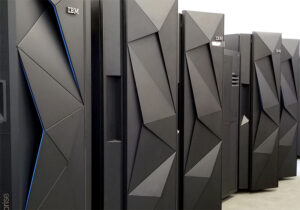SiliconANGLE Article by Jason Bloomberg
Dating from 1955, SHARE was the first enterprise information technology user group back when mainframes were the only game in town. Today, 68 years later, SHARE is still going strong, as it transforms itself to support a new generation of mainframe professionals.
The crowd at this week’s SHARE conference in New Orleans nevertheless had its share of grizzled veterans who euphemistically call themselves “late-tenure.” Though “new tenure,” aka younger mainframers, were in short supply in the halls of the New Orleans Hyatt Regency, their recruitment, training and continued employment were top of mind among vendors and enterprise end-users alike.
The reason that new tenure mainframers are so important, of course, is because the mainframe itself remains essential to the hundreds of enterprises that depend upon the venerable platform. Far from being a legacy technology, the IBM Z platform (pictured) is fully modern, forming the crux of many enterprise’s AI, Linux and cloud-native strategies.
As a result, the buzz at SHARE is an odd mix of old and new. Conversations were just as likely to center on discussions of 40-year-old tooling as running AI workloads on the new IBM Telum Processor.
Among all the back and forth, three topics emerged as the central themes of SHARE. Here’s a summary:
Hot topic No. 1: modernization
Modernization is always a hot topic in mainframe circles – modernization of applications, infrastructure, architectures, development processes and tooling.
What’s missing from this list: modernization of the platform itself. There are certainly some companies with older mainframes that could do with a new one, but nobody was talking about that.
The focus of the application modernization discussions centered on updating and rewriting older code – a task that mainframers of the past shied away from. In the old days, nobody wanted to mess with ancient applications, for fear of breaking them. Today, better tools and processes are empowering developers to chip away at ancient code monoliths, updating business logic while also moving to modern microservices architectures.
One important tool for slicing through the Gordian knot of legacy code is BMC AMI DevX Code Analysis. With this tool, developers can understand complex mainframe code quickly. Even new-tenure developers can use this tool to poke through old code, updating and troubleshooting it regardless of its complexity.
Rocket Software Inc. also offers a suite of tools that focus on modernization without disruption. The company offers low-code and no-code development tools for seasoned developers and novices alike, supporting modern continuous integration and delivery, or CI/CD, practices for mainframe development.
In fact, the move to DevOps also represents an important modernization trend, both for tooling as well as software development processes. DevOps requires automation as well as greater collaboration across the development, infrastructure, testing and operations teams.
With the increasing prevalence of the new-tenure mainframers, such processes and tools are essential for attracting and maintaining the new generation of mainframe professional.




Comments
Comments are closed.